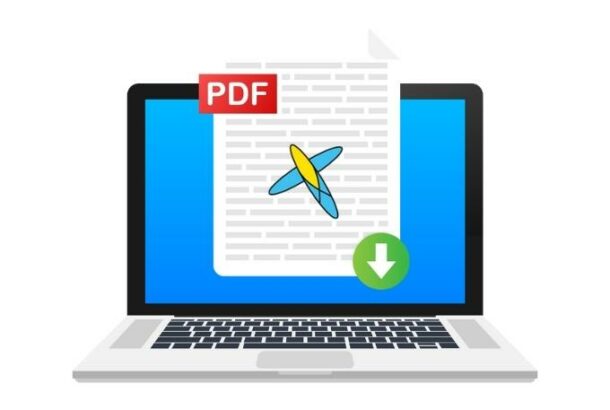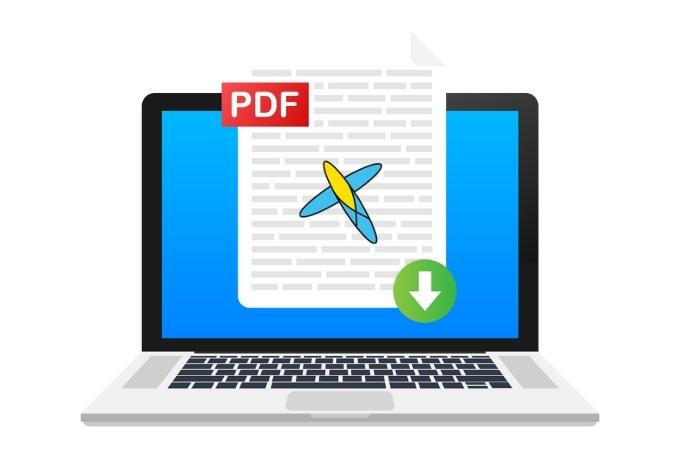The Ultimate Guide to Agile Planning
In the fast-paced and competitive world of business today, Agile Planning has become an essential strategy rather than a luxury. It allows businesses to quickly adapt to changes, manage risks effectively, and consistently deliver value. At Leadership Tribe, we specialize in helping businesses with their Agile Planning and other training requirements.
Understanding Agile Planning
Agile Planning is the key ingredient that helps businesses adapt to the dynamic field of project management. It’s a versatile and iterative process that involves continuously adjusting plans based on evolving project requirements. By prioritizing collaboration, customer feedback, and frequent product releases, Agile Planning enhances speed and flexibility in development.
Agile planning is crucial for successful digital transformation. It enables organizations to effectively navigate the dynamic digital landscape and implement changes with efficiency, giving them a competitive edge.
In Agile Planning, projects are divided into smaller, manageable pieces known as user stories. These user stories represent the specific features or functionalities that users want. By emphasizing on user stories, Agile Planning ensures that the development process is aligned with customer needs and priorities.
The Agile Planning Process
The Agile Planning process can be likened to a well-coordinated dance, with every step leading you towards project success. Let’s take a closer look at how it works:
- Project Visioning: This is the starting point where the exciting journey begins. It involves defining the vision and goals of the project, setting a clear direction that aligns with the organization’s strategic objectives. This step lays the foundation for the entire Agile Planning process.
- Road Mapping: Imagine road mapping as plotting your journey. In this stage, you define the main requirements and scope of the project. The roadmap establishes a timeline for the project, highlighting important milestones and deliverables that will be achieved along the way.
- Release Planning: Breaking things down further, release planning is the process of dividing a project into smaller iterations or releases. Each release has a specific set of features or functionalities that are delivered, bringing the project closer to completion.
- Iteration Planning: Let’s get down to business with iteration planning. This crucial step involves choosing user stories from the product backlog and estimating the effort needed to complete them. The team works together to decide which stories will be tackled during the iteration and creates a meticulous plan for their implementation.
- Daily Check-ins: This step involves daily stand-up meetings with your team. During these meetings, team members discuss their progress, address any issues or obstacles, and commit to completing their assigned tasks for the day. It helps keep everyone on track and ensures that the project continues to move forward.
In the Agile planning process, collaboration and effective communication are crucial for success. This involves active participation from various team members, including developers, project managers, and stakeholders. Their coordination and cooperation play a vital role in ensuring that the Agile process is carried out smoothly and efficiently.
At Leadership Tribe, our Agile Consulting service is dedicated to helping your business find and implement the most effective version of Agile. We collaborate closely with you to deliver tangible results and guide you through a successful transformation journey using Agile principles.
Tools and Techniques in Agile Planning
Effective Agile Planning requires a reliable set of tools and techniques, much like having a trustworthy toolbox at your disposal. Here are a few popular options:
- Jira: Jira is a versatile project management tool that offers a wide range of features. It helps teams effectively plan, track, and release software projects. With its collaborative capabilities, efficient backlog management, and real-time progress tracking, Jira ensures that your projects stay on schedule and organized.
- Trello: Trello is a virtual whiteboard that simplifies project management. Its intuitive interface utilizes boards, lists, and cards to effectively organize tasks. With Trello, you can easily visualize and track progress as you move tasks through different stages, ensuring seamless collaboration within your team.
- Scrum: Scrum acts as the conductor that harmonizes your Agile Planning process. It is an Agile framework that emphasizes collaboration, self-organization, and iterative development. Through breaking projects into short sprints, Scrum enables you to deliver a product increment that can potentially be shipped at the end of each sprint.
- Kanban: Kanban is a valuable tool that can assist in staying organized and efficient. It serves as a visual assistant by providing a clear workflow management system. With Kanban, work is visualized, progress is limited to ensure focus, and flow is optimized. By utilizing a Kanban board, tasks can be effectively tracked, priorities managed, and work kept flowing smoothly.
By utilizing these tools and techniques, businesses can optimize their Agile Planning process, enhance team collaboration, and attain superior project results.
Agile Planning Models
When it comes to selecting an Agile Planning model, it’s crucial to find the one that aligns best with your business needs. Here are a few popular models worth considering:
- Scrum: Think of Scrum as the friendly team player in your neighborhood. It focuses on collaboration, self-organization, and iterative development. By breaking projects into short sprints and creating potentially shippable product increments, Scrum is perfect for handling rapidly changing or highly emergent requirements.
- Kanban: Kanban is an effective method for ensuring smooth workflow and productivity. It emphasizes visualizing tasks, setting limits on work-in-progress, and optimizing flow. Kanban is particularly well-suited for teams that operate with continuous flow and frequently release their work.
- Lean: Lean methodology is often referred to as the efficiency guru. It focuses on eliminating waste and maximizing value, ensuring that customers receive the most benefit while using minimal resources, time, and effort. By incorporating lean principles into other Agile Planning models, organizations can enhance both efficiency and customer value simultaneously.
- Extreme Programming (XP): XP serves as a reliable guardian, ensuring that your code is of the highest quality. By emphasizing software engineering best practices, such as regularly releasing updates, continuous integration, test-driven development, and pair programming, XP guarantees top-notch results. This approach particularly suits projects with dynamic requirements and a strong emphasis on maintaining exceptional quality standards.
Selecting the most suitable Agile Planning model is contingent upon several factors, including project complexity, team dynamics, and organizational culture. It is crucial to evaluate your specific requirements and match them with the advantages offered by each model.
Challenges in Agile Planning
Just like any journey, Agile Planning comes with its own set of challenges. Here are some common ones:
- Resistance to Change: Some individuals may resist embracing Agile Planning due to the fear and uncertainty that come with change. It is crucial to acknowledge and address this resistance, guiding team members towards understanding the advantages and value of adopting Agile Planning methodologies.
- Lack of Understanding: The key to successful Agile Planning is having a clear understanding of the Agile principles and practices. It requires a mindset shift, which can be achieved through comprehensive Agile Training and education. This ensures that everyone involved has the necessary knowledge and is aligned with the same goals.
- Managing Distributed Teams: Collaboration becomes more challenging when teams are geographically dispersed. To effectively navigate this hurdle, it is crucial to prioritize clear communication and utilize appropriate collaboration tools that foster connectivity among team members.
At Leadership Tribe, we recognize the obstacles businesses face in adopting Agile methodologies. That’s why we provide comprehensive Agile Training programs, including ICP-ATF (Agile Team Facilitation) and ICP-ACC (Agile Coaching). These programs equip individuals with the knowledge and skills necessary to overcome these challenges and guide teams through successful Agile Planning processes. Our goal is to empower businesses by building high-performing teams and facilitating their journey toward agility.
Benefits of Agile Planning
Agile planning is like a superpower for businesses, offering numerous benefits. Let’s take a look at some of the key advantages:
- Faster Time to Market: A key advantage of Agile Planning is its ability to expedite time to market. By delivering products and features in smaller increments, businesses can meet customer needs more swiftly and effectively through this iterative approach.
- Improved Customer Satisfaction: By including customers in the planning process and incorporating their feedback, Agile Planning ensures that the end product meets their expectations. This results in greater customer satisfaction and loyalty.
- Increased Flexibility and Adaptability: By implementing Agile Planning, businesses gain enhanced flexibility and adaptability. This enables them to swiftly respond to shifting market conditions, customer demands, and emerging opportunities. Ultimately, Agile Planning fosters a culture of adaptability and continuous improvement.
- Improved Team Collaboration: Agile Planning promotes collaboration and teamwork across different functions. It eliminates barriers between teams and cultivates a collective sense of responsibility and ownership among team members.
- Risk Mitigation: Agile Planning enables businesses to proactively identify and mitigate risks by monitoring and adjusting plans continuously. This approach helps reduce the chances of expensive project failures.
Implementing Agile Planning in Your Business
If you’re ready to bring Agile Planning into your business, get ready for an exciting adventure. Here are some steps you can take to get started:
- Evaluate Readiness: Take the time to assess your organization’s readiness for Agile Planning. This involves evaluating the current culture, team dynamics, and project management processes in place. By understanding where you currently stand, you can better determine the most effective path forward.
- Training and Education: It is crucial to provide Agile Training to all team members, including developers, project managers, and stakeholders. This training will equip them with a deep understanding of Agile principles, practices, and their roles in the Agile Planning process. Remember, knowledge is empowering!
- Choose the Right Tools: Choose the tools that are right for your business and project. Consider your team’s preferences and capabilities when selecting Agile Planning tools and techniques. Using the right tools can make a big impact on your success.
- Pilot Projects: Start by conducting small pilot projects to test and improve your Agile Planning approach. This will help identify any challenges or areas for improvement before scaling up. Learning from firsthand experience is incredibly valuable.
- Continuous Improvement: Embrace a culture of continuous improvement to foster growth. It is important to encourage feedback from your team members and stakeholders, using it to refine your Agile Planning processes over time. Remember that the journey is ongoing, and there’s always room for improvement.
At Leadership Tribe, we provide a variety of services to support your journey, including Agile Consulting and Training. Our team of experts will closely collaborate with your team to ensure a seamless and successful transition to Agile methodologies.
Conclusion
To sum up, Agile Planning is a dynamic approach that has the potential to transform your business operations. It goes beyond project management and focuses on fostering a collaborative and adaptable environment in which teams flourish and consistently deliver value. By embracing Agile Planning and utilizing the expertise of Leadership Tribe, you can navigate your journey of transformation with assurance and attain sustainable success.
Agile Planning acts as a compass, providing guidance through the intricate landscape of modern business. Its purpose is to facilitate rapid adaptation, consistent value delivery, and staying ahead of market shifts. With Agile Planning in place, you can unleash your team’s full potential and foster innovation within your organization.
Are you prepared to begin your journey into Agile? Partner with Leadership Tribe for their Agile Planning services and take the first step toward a more successful and adaptable future. Schedule a consultation by clicking the “SCHEDULE A CALL” button on our website or express interest in a specific service by clicking “I WANT THIS.” Let us guide you through your transformation journey and help create a flourishing, agile organization.
Frequently Asked Questions
- What is Agile Planning? Agile Planning is a flexible, iterative approach to project management that emphasizes continuous planning, feedback, and adjustment based on evolving project requirements.
- Why is Agile Planning important for businesses? Agile Planning allows businesses to respond quickly to changes, deliver value consistently, and improve team collaboration. It also reduces risks by enabling early identification and mitigation of issues.
- What tools are used in Agile Planning? Several tools can be used in Agile Planning, including project management platforms like Jira, Trello, and Asana, and Agile frameworks like Scrum and Kanban.
- How does Leadership Tribe assist with Agile Planning? Leadership Tribe offers Agile Consulting and Training services to help businesses implement Agile Planning. They co-create and implement the right version of Agile, deliver tangible business value, and assist businesses to triumph in their transformation journey.
- What are some common challenges in Agile Planning? Common challenges in Agile Planning include resistance to change, lack of understanding of Agile principles, and difficulties in managing distributed teams. However, these can be overcome with appropriate Agile Training and guidance.
- What benefits can businesses expect from Agile Planning? Agile Planning brings numerous benefits, including faster time to market, improved customer satisfaction, increased flexibility and adaptability, enhanced team collaboration, and risk mitigation.
- How can a business start implementing Agile Planning? Businesses can start implementing Agile Planning by assessing their readiness for Agile, providing Agile Training to their team, choosing the right Agile tools, starting with pilot projects, and embracing a culture of continuous improvement.
Agile Planning Models Comparison Chart
| Agile Model | Description | Strengths | Best Suited For |
| Scrum | Emphasizes collaboration, self-organization, and iterative development. | Highly flexible, encourages team collaboration, ideal for complex projects. | Projects with rapidly changing or highly emergent requirements. |
| Kanban | Focuses on visualizing work, limiting work-in-progress, and optimizing flow. | Increases efficiency, reduces time wasted on multitasking and switching tasks. | Teams with continuous flow and frequent releases. |
| Lean | Focuses on eliminating waste and maximizing value. | Reduces waste, increases efficiency, and focuses on delivering value to customers. | Companies looking to improve efficiency and customer value concurrently. |
| Extreme Programming (XP) | Emphasizes software engineering best practices. | High quality of code, accommodates changes rapidly. | Projects with rapidly changing requirements and a strong focus on quality. |



